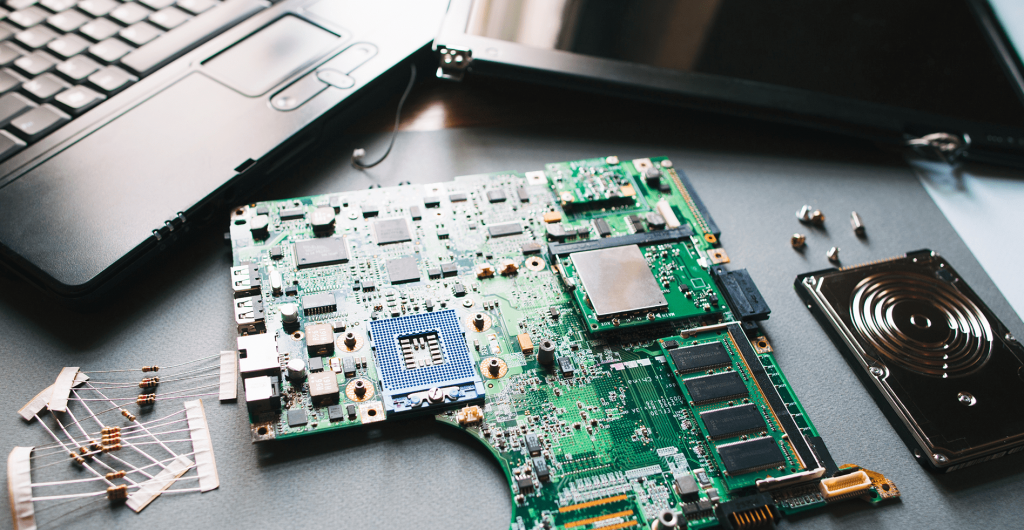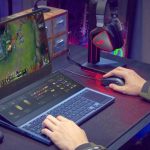Laptops are a convenient and comfortable way to access the Internet and many other programs.
But what if you open your laptop, only to find that the motherboard is broken? This one scenario is fairly typical.
Laptops are usually fairly durable, but just think about the motherboard specifically; it’s not too difficult to damage. In this article, you will learn how to install a new motherboard after you have removed the old one.
To replace the motherboard, you will need a screwdriver, a soldering iron and solder, and some small pliers. You will also need to replace some damaged components, such as the RAM, the hard drive, and the DVD drive.
Some people opt to connect their laptop to an external hard drive or USB hard drive, in case the new motherboard doesn’t come with default ports.
Other peripherals, such as a printer, may not work as well with the new motherboard , so other pieces may need to be changed.
What Causes the Death of a Laptop Motherboard?
Contents
If you’re going to be utilizing a high-end system for a long period of time, consider finding yourself a nice or fish-tank-powered PSU that can keep your system cool at all times.
Heat deteriorates all hardware components over time, but the damage is worse on motherboards.
Due to their tiny chassis and wires, motherboards are especially susceptible to short circuits.
A buildup of dust in your computer’s ventilation system, both in and around the fans, can restrict airflow. This restricts the amount of air that can cool the components, causing them to gradually overheat and eventually fail.
In addition to incorrectly connected or partly connected parts, a damaged motherboard may overheat because of over-zealous fans.
Overheating of a motherboard is one of the most common causes of computer failure. Fortunately, a motherboard can be replaced if the damage is bad enough.
How Can You Tell Whether Your Motherboard Is Dead or Not?
Motherboard failures may be difficult to spot , but it’s always a good idea to perform routine checks on your personal machine.
When my current laptop’s motherboard broke, the technicians at my PC store told me that I could replace the processor, RAM, and graphics card. However, my motherboard was salvageable and I could recoup most of my money by replacing only the damaged components.
If you push the power button on your desktop or laptop, but nothing happens, it’s a telling sign that something’s wrong.
However, this does not necessarily mean your motherboard is dead; it’s also conceivable that your power supply is sluggish or that your CPU overheated and the computer went down as a failsafe. If your laptop’s battery is completely dead, try connecting it to an AC adapter and turning it on.
When the BIOS tries to do a POST Power On Self Test, you may hear a beep code.
If your motherboard’s power LED is on, but has malfunctioned, this could indicate a major problem. It’s not necessarily a sign that your motherboard is dead; unless the entire power supply unit failed, this doesn’t necessarily mean that the motherboard is permanently destroyed.
For laptops, the battery may be completely dead, in which case you’ll have to plug in the AC adapter.
If your computer keeps sporadically booting or shutting down, your motherboard may be the culprit.
As the computer turns on, the BIOS checks your RAM and your hard drive. If it finds corruption, it will prevent the computer from turning on.
So, if your RAM is good but your hard disk is not, your computer may fail to boot. If your CPU is experiencing a CPU malfunction, then it may fail to boot the computer.
This is especially common with laptops.
Another red flag is if your computer is freezing frequently or grinding or spinning. If you suspect your motherboard is faulty, it may be a good thing to buy a new one, as it’s likely that an upgrade in your hardware will be more cost-effective and efficient than buying a new computer.
You should visually verify the capacitors against your motherboard’s manual. If your motherboard shows that the power-on LED is on, but the screen stays blank, then it’s a good indication that your motherboard has burned out.
How to Replace Motherboard on Laptop
- Complete instructions for removing the optical drive , hard drive, memory and CMOS battery from the motherboard should be noted. Replacing a motherboard involves removing the existing board and installing the new board in its place, essentially putting the computer back together.
- Remove the power cord from the motherboard and disconnect the keyboard and mouse. Align the screw holes on the modular drive bracket with the holes on the motherboard.
- Invert the laptop near a wall so the screen is upright, then plug in the power cord and the display’s power cord.
- Connect the power cable to the device, and turn on the device. Press the power button to turn on the computer. The computer’s BIOS should load. Enter BIOS by pressing F2. Use the arrow keys to navigate. Locate the hard drive’s ATA/PATA slot. Use the arrow keys to scroll down to the PATA/ATA setting.
- You may discharge any static energy by grounding yourself on a metal surface when working around sensitive electronic parts.
- Remove any screws or other components that were holding the old motherboard in place. Place the motherboard in the laptop following the same procedure as the old one. Connect any external components to the new motherboard.
- Screw the motherboard back into place. Do not force the motherboard back into place as you may cause damage. If everything is assembled correctly, you will have a computer with a new look and a new hard drive.
- They’d be taken out already, but be extra careful not to screw anything up.
- Roll the memory access channel back and forth with the two thumbs.
- Loosen the clips that hold the new motherboard in place, and slide it into place. Here’s what you’ll need to do for your next motherboard: Remove the four screws that hold the motherboard in place. Lift the motherboard slightly to disengage the cable connectors. Remove the cables from the motherboard by grasping them and pulling them out. Once the cables are removed, the motherboard is ready to be removed from the laptop. Some people choose to reassemble the computer in reverse order after replacing the motherboard. However, someone else may choose to reassemble the computer in reverse order.
- The memory chips are often soldered in place, if they are easily accessible, you can swap them out.
- Memory chips about half the size as regular.
- Disconnect the antenna line from the laptop’s motherboard. Cut the new motherboard’s connector cable to the correct length. Join all parts in the correct order. Insert the connectors into their slots on the motherboard. Reconnect the antennas with the motherboard and to any available connectors on the external case. Connect any external components. Replace any removed screws. Install the new motherboard and reattach it.
- By loosening the clamps that hold the new motherboard and replacing the screws, the motherboard will slide into the case.
- If your machine has an integrated motherboard, then there will be no screws to remove.
- If the CPU is detachable, detach it. Close the case. Replace the screws that hold the motherboard in place.
- Remove all of the screws that hold the case in place. Remove the case. Remove the old motherboard. Place the motherboard for the new computer face down on a flat surface. Secure the motherboard in place with screws. Make sure the motherboard is straight. Mount the new motherboard on top of the case, and secure it in place with screws. Connect the motherboard to the video card, processor, and other integrated cables. Connect the motherboard to the hard drive, optical drive, and sound card. Replace the motherboard and connectors.
- Because they’re little and easily stripped, use your fingers to unscrew easily.
- Unless absolutely necessary, remove any memory sticks, CDs, or DVDs from the laptop and disconnect them from their optical drives.
- With care, open the case and locate the power connector.
- If the conceal clips for the motherboard cables are broken, use a thin object, such as the tip of a pen, to press the end of the cable against the motherboard.
- On certain PCs, the keyboard may need to be removed or lifted out of the way.
- Before you start dismantling anything , make sure that you are wearing protective gloves and eye protection. It will aid you in reassembling the system.
- All cables from memory banks to disk drive connectors must be reconnected for the new motherboard. Connect the ribbon cables to the connectors on the motherboard and reassemble the device.
- Unplug any devices that aren’t needed during the procedure. Thread the new motherboard into position, and then connect the cables to the PC.
- Locate the motherboard’s rear ports and remove them. Remove the screw holding the fan in place. Pry the fan outward by the screw until you hear it break. Lift the fan out of the motherboard. Separate the retaining clips holding the CPU in place. Release the clips and lift the CPU out of the motherboard. Wipe the motherboard clean with a dry cloth. Apply a small amount of thermal compound to the surface of the CPU. Reinstall the CPU by pushing it into place.
- Rebuild the components in reverse order after replacing the motherboard. Replace all cables and reconnect the motherboard to the motherboard and chassis.
Also Read: How Can You Charge Your Laptop With A Broken Charger Port?
Conclusion
Your laptop’s motherboard has various components that work together to process data and send signals.
Common components to look for include a processor, a motherboard, a power supply, system memory, a hard disk, and video cards. If any of these components have broken, you’ll need to replace the motherboard.
It may, however, be better to buy a new one since the motherboard is usually the most important part of your laptop.
When diagnosing a laptop motherboard problem, it’s helpful to know whether the motherboard has chips on it or damaged capacitors. The chips can be out of alignment or the pins can be bent.
On laptops with a motherboard that has damaged capacitors, the circuit shorting may be the cause of the problem, but it’s possible that the defective capacitors could be caused by cracked solder. Replacing the motherboard for your laptop can be a tricky process, but you only need to do it once.
You may be able to recover the motherboard without replacing any other parts but if the problem is serious or it’s a broken part your computer may not be working properly.
Replacing a motherboard will definitely cost a lot of money because you will have to get a new one. Before you go ahead and replace the motherboard it is important to make sure that you know exactly what the problem is.
If you have to replace several parts it might be best to go ahead and get the computer fixed with a new motherboard.




